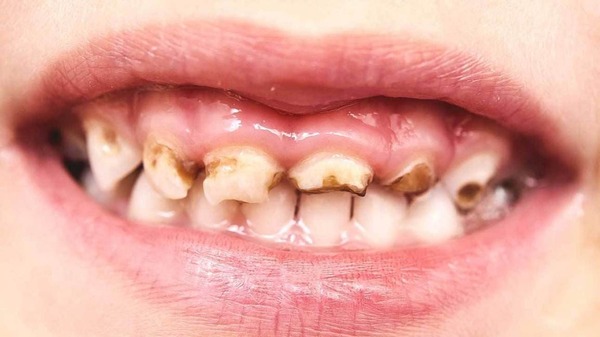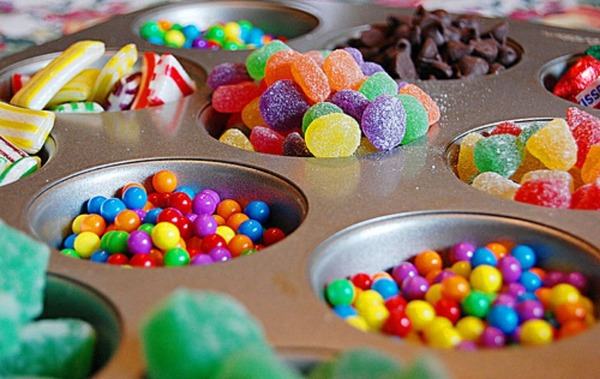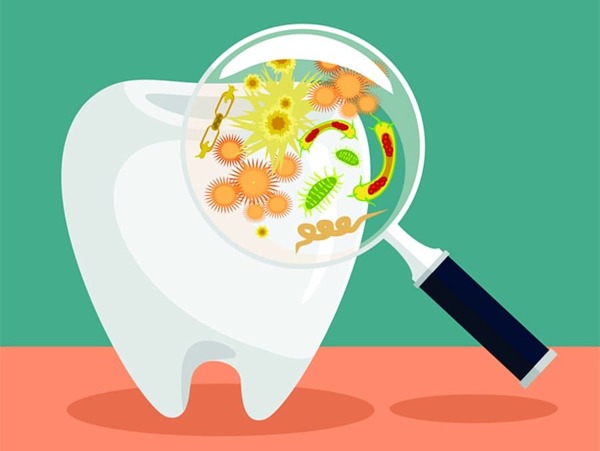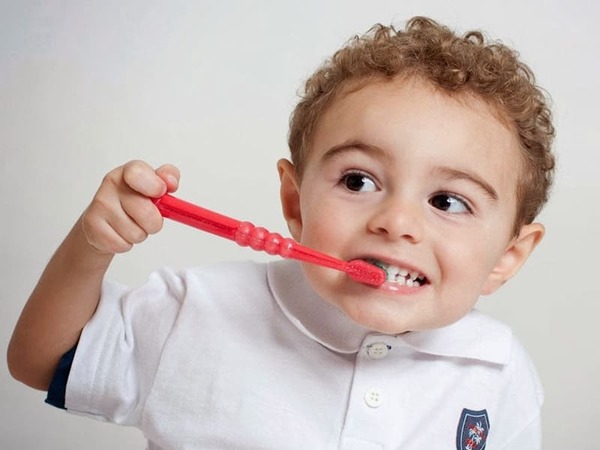Tooth decay in children: causes, signs, timely treatment and prevention
Tooth decay in children can stem from many causes. Cavities begin as a demineralized white spot and rapidly develop into cavities, eventually destroying the entire crown of the tooth. The following article will provide detailed information about tooth decay in children, guide and help children have the right oral care habits, not only keep a beautiful smile but also healthy teeth.

1/ Signs of decay in children’s teeth
In the early stages, tooth decay in children often has no obvious signs. The initial demineralization lesion gradually turns into a carious lesion within 6 to 12 months.
The most common picture of tooth decay in children is the appearance of changes such as: small holes in the teeth, teeth that change color to yellow, brown, even black, swollen, painful gums, …
In addition, the following signs are also easy to see in children with tooth decay:
- Children have pain and pain when chewing or biting food
- Sensitive teeth (sensitivity, pain) when exposed to hot or cold food
- The baby’s breath has a long-lasting bad smell
- Children experience sudden toothaches for no apparent reason
- Ivory white or black spots, small holes in the teeth visible to the naked eye

Even if you notice any of the above signs in your child, you should take your child to the dentist as soon as possible. Prolonged tooth decay in children can lead to tooth loss.
2. Causes of tooth decay in children
Tooth decay in children has many causes. In particular, the main cause is largely due to an ineffective oral care regimen as well as an unreasonable diet. As a result, the child suffers from pain, affecting all other activities and the whole body later in life.
Here are the causes of tooth decay in children you should pay attention to to properly prevent and promptly find ways to treat toothache for children if you know that your child has tooth decay.
2.1 Habits of eating a lot of sugar
This can be considered the main and most common cause of tooth decay in children. Children often love foods and drinks that are sweet, even sweet.

The high sugar content in foods such as cakes, ice cream, and candies has a direct effect on children’s teeth, making them prone to tooth decay.
Food debris left on the teeth or stuck in between the teeth will combine with saliva to form plaque that covers the teeth. Carbohydrates from them will be fermented into acids by bacteria existing in the oral cavity.
Acids attack, erode inorganic substances of enamel and dentin, these lesions gradually form cavities in children. And the subjective failure to treat early when tooth decay is in the early stages also makes the oral health of children worse and worse.
At the same time, drinks with a lot of sugar that children often eat such as milk, soft drinks, bottled water, etc. are also capable of causing tooth decay.
The sugar and colorants in these drinks accumulate around the child’s teeth, increasing the risk of enamel damage and even infection.
2.2 Health status
Depending on the location, whether the tooth structure is easily affected and certain health conditions, the risk of tooth decay in children may be less or more.
For example, in children with chronic allergies, it may be that frequent mouth breathing leads to dry mouth, or is also a risk of causing or worsening tooth decay.
2.3 Give your baby a bottle at night
Most of us feel that it is completely normal and harmless to give milk and bottles to babies at night. However, in fact, maintaining this habit is one of the causes of tooth decay in children.
Milk contains sugar and they can stay on teeth for hours, creating conditions for caries-producing factors and increasing the risk of tooth decay.
2.4 Lack of Fluoride
Fluoride is a natural mineral that has a protective effect, helping to restore early damage if teeth are encountered.
Normally, we easily find Fluoride in food, tap water, toothpaste and mouthwash. Children who do not use these fluoride-containing products have a higher risk of tooth decay than children who do.
3. Harm when children have tooth decay
The immediate harm is that the child is in pain, has difficulty eating, and other daily activities. Tooth decay in children damages the tooth pulp, and in the long run, it will cause pulpitis.
Without prompt and definitive treatment, pulp necrosis and even pus in the tooth are entirely possible.
Dental caries in children is also a precursor to other symptoms such as lymphadenitis, osteomyelitis, cellulitis, maxillary sinusitis. When tooth decay does not stop progressing, the child will need to be hospitalized for treatment if the condition is severe.
The process of teething of a child’s permanent teeth is also affected more or less if the child is not properly and promptly treated for a baby tooth infection.
In general, in addition to the high cost of treatment, other health problems are also unpredictable effects of tooth decay in children.
4. How to treat tooth decay in children
When detecting that a child has tooth decay, parents need to take the child to a dental facility for treatment, to avoid spreading it to other teeth.
After examining and finding the cause, the dentist will recommend the appropriate treatment:

4.1. Fluoride treatment
This is a method of restoring enamel damage in the early stages when white spots appear. The dentist will apply fluoride gel, foam, … on the child’s teeth to cover the tiny cavities and add essential minerals to the teeth.
In addition, children may be prescribed products containing fluoride to help reduce damage and restore tooth surface.
4.2. Fillings
This method is intended to protect the remaining teeth when the cavities are large but have not affected the tooth pulp. After cleaning the deep hole, the dentist will fill it with dental amalgam or porcelain resin.
4.3. Dental crowns
When the tooth is severely decayed and cannot be filled, the method of crowning will be the appropriate choice. Crowns are placed on teeth to save severely damaged teeth, protecting them from further deterioration.
A crown is a cover that is restored according to the shape of the original tooth. The dentist will grind the damaged teeth to remove them, then fill and grind the sides and then put the crown on the tooth.
4.4. Root canal and tooth filling
If tooth decay in children is prolonged and severe, then pulpitis is unavoidable. In this case, to minimize the risk of having to have the tooth extracted, the dentist will conduct a root canal treatment by removing the infected pulp from the tooth, cleaning and filling the hole.
Depending on the extent of the damage to the tooth, the dentist may prescribe a crown after root canal treatment to better protect the tooth.
4.5. Tooth extraction
If the condition of tooth decay in children is too severe, it must be extracted to avoid spreading to adjacent teeth. On a case-by-case basis, a dental implant or bridge may be considered.
5. How to prevent tooth decay in children
5.1 Prevent tooth decay with oral hygiene:

The first and most effective method to prevent tooth decay in children is good oral hygiene.
From the stage of baby teeth, parents have to pay attention to oral hygiene for children. At this stage, using a brush can damage the gums, so parents can use gauze to clean their children’s teeth.
At the stage when children can brush their own teeth, parents should still regularly pay attention and remind children to keep regular brushing habits, instruct them on how to brush their teeth, clean their tongue and rinse their mouths to prevent this condition. tooth decay in children.
5.2 Prevent tooth decay by diet:

Many scientific studies have proven that: changing the diet is also a method of preventing tooth decay in children. Parents need to pay attention to adjust the balance in their children’s daily eating menu, specifically:
- Replace the diet containing high sugar content, too rich in starch with foods rich in fiber such as: celery, broccoli …
- Cheese can be added to the diet, cheese and dairy products contain calcium and some other nutrients that are good for teeth and bones.
- It is necessary to avoid sweet foods such as candy, cakes, soft drinks … This is the cause of inflammation, swelling of the gums, tooth decay in children.
6. Tips to help keep children’s oral hygiene:

To keep children’s oral hygiene and prevent tooth decay in children, parents should note the following extremely useful tips:
- Choose the right brush: not too soft to make brushing not clean, nor too hard to hurt your baby’s gums.
- Brush your teeth regularly: twice a day, morning and night to keep your teeth clean.
- Make sure to clean the brush after use: a brush that is not dry will be a breeding ground for harmful bacteria for children.
- Should use more tongue scrapers: The tongue is also a favorable environment for the growth of bacteria that cause infections of the teeth and gums.
- Replace your toothbrush regularly: Toothbrushes need to be replaced after up to three months of use.
- Use mouthwash: gargle with dilute salt water to reduce tooth decay in children, as well as prevent bad breath.
- Flossing: Flossing can clean between teeth where a regular toothbrush can’t reach.
- Cut down on sweets: Applying a diet low in sweet foods, creating interest in children with more fiber-rich foods, such as green vegetables, fruits, etc.
- Periodic dental health check: Take your child for regular dental check-ups every three months, to control the growth of the mouth and have a timely intervention for the child.
Hope the above information of Dr. Muối will help you take better care of your children’s teeth and prevent tooth decay in children.

If you are interested in mouthwash Dr. Salt for better oral care above can be purchased at:
- Chain stores: Vinmart+, Bach Hoa Xanh, Guardian, An Khang pharmacy, Long Chau pharmacy, Phanolink (of phano pharmacy)
- Order online at: Lazada, Shopee, Tiki (always in the top 10 best-selling mouthwash products of the month)
- Website: https://doctormuoi.vn/shop/ for sale online and home delivery.
- Currently, there are branches in many big cities: Ho Chi Minh City, Hanoi, Nha Trang, Da Nang, Can Tho,.
Dr. Salt mouthwash helps prevent tooth decay in children effectively
You Can Refer To More Articles:
Should I wash my nose with physiological saline?
Instructions for Self-healing Sinusitis with Physiological Salt Water
Tips for Treating Allergic Rhinitis with Physiological Salt Water Simple and Effective
Instructions on how to hydrate with salt water to treat bad breath
